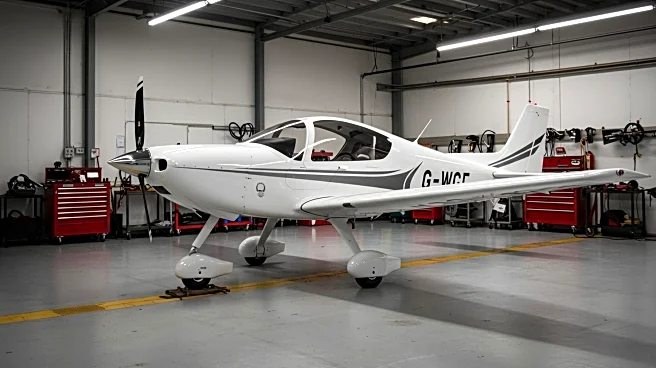What's Happening?
The Federal Aviation Administration (FAA) has finalized the MOSAIC initiative, a significant regulatory change aimed at increasing flexibility in the aviation industry, particularly for light sport aircraft and flight training. Announced by U.S. Transportation Secretary Sean Duffy, the new rule modernizes the light aircraft category, expanding sport pilot privileges and allowing for more diverse aircraft types, including rotorcraft and powered-lift. The rule also lifts previous prohibitions on propulsion and novel architectures, enabling the development of sustainable battery-powered aircraft. This change is expected to facilitate innovation by reducing the cost and complexity of certification, particularly benefiting startup companies in the advanced air mobility sector.
Why It's Important?
The MOSAIC initiative represents a major shift in aviation regulation, potentially transforming the landscape for light sport aircraft and advanced air mobility. By allowing more flexibility in aircraft design and certification, the rule could accelerate the development of electric and hybrid aircraft, promoting sustainability in aviation. This change is particularly beneficial for startups, which often face financial constraints in obtaining costly type certifications. The expanded pilot privileges and aircraft categories could also increase accessibility to flight training, potentially boosting the number of pilots and supporting the broader aviation industry. Overall, MOSAIC is seen as a catalyst for innovation and growth in the aviation sector.
What's Next?
The changes to pilot privileges under MOSAIC will take effect 90 days after the final rule's publication, while the aircraft certification rule changes will be implemented in a year. As the industry adapts to these new regulations, companies are expected to explore new opportunities in aircraft design and training. The rule's impact on business aviation and the broader industry will be closely monitored, with stakeholders analyzing how to leverage the new flexibility to enhance their operations. The FAA's approach aims to balance safety with innovation, setting the stage for future advancements in aviation technology.
















